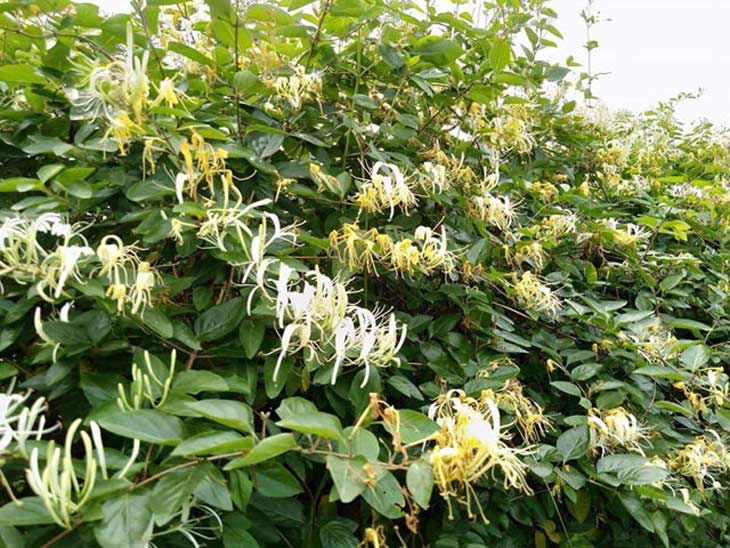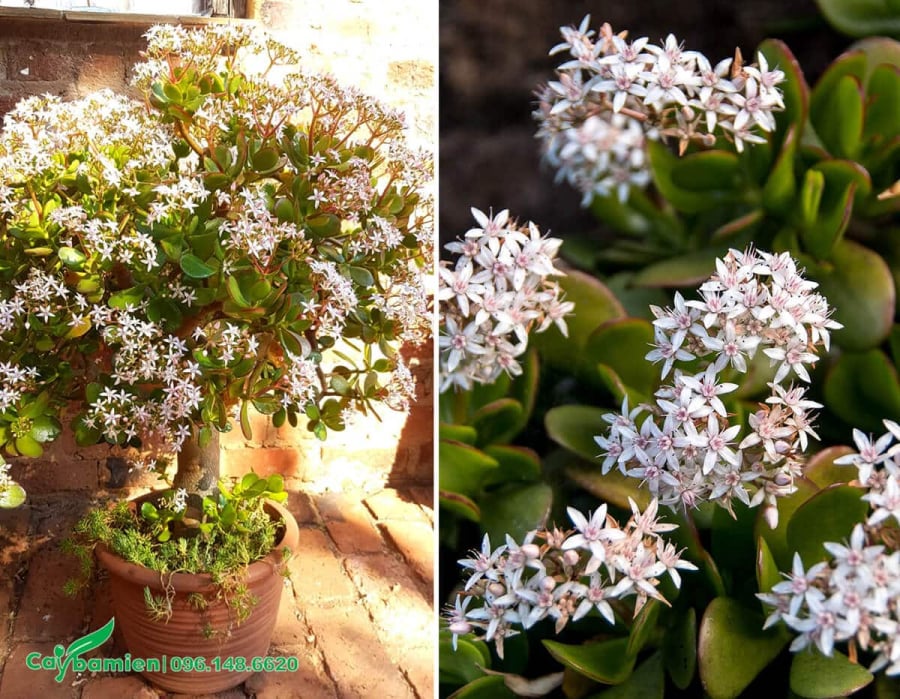There are some houseplants that rarely flower, but when they do, it’s like hitting the jackpot for the homeowner, as wealth comes pouring in.
1. Money Tree (Pachira aquatica)
The Money Tree, or Pachira aquatica, is a popular houseplant known for its tall branches and lush, green leaves that persist throughout the year. It is also believed to purify the air when grown indoors. While the Money Tree is commonly grown, cultivating a healthy, thriving specimen is not as easy. This plant is particularly challenging to induce into flowering, and even when it does, the odds are slim.
However, if your Money Tree does bloom, consider it a sign of impending wealth and smooth sailing in your endeavors. For business owners, in particular, the flowers of the Money Tree signify prosperity and good fortune, so keep an eye out for those blooms as they could be a harbinger of success.

Money Tree flowers bring wealth and good fortune
2. Jade Plant (Crassula ovata)
The Jade Plant, or Crassula ovata, is another common houseplant, often admired for its dense branches and elegant shape. It is undemanding when it comes to light and is an excellent air purifier, making it ideal for indoor spaces. While the Jade Plant can flower, it is a rare occurrence. The flowers themselves are small and bell-shaped, with a vibrant yellow color that adds a touch of luxury to the plant’s overall appearance.
Older, larger Jade Plants have a higher chance of flowering, and when they do, it is believed to bring happiness, prosperity, and all-around good fortune to the homeowner. So, if your Jade Plant surprises you with flowers, consider it a sign of abundant blessings to come.
3. Pearl Jade (Hoya obovata)
The Pearl Jade, or Hoya obovata, is a unique plant, as many specimens grow to great heights without ever producing flowers. It is extremely rare to see a Pearl Jade in bloom, but it is not impossible. In fact, the flowers of the Pearl Jade are considered a symbol of luck, wealth, and prosperity. To encourage flowering, ensure your Pearl Jade receives adequate sunlight and nutrients, and consider growing it outdoors rather than confining it to an indoor space.

Pearl Jade flowers symbolize luck, wealth, and prosperity
4. Agave (Agave spp.)
While the Pearl Jade may be rare to flower, the Agave takes it a step further, earning the nickname “the thousand-year-old plant that never blooms.” However, on rare occasions, the Agave will surprise you with a spectacular display of flowers. These blooms are considered a sign of promotion and wealth by many, bringing not just good fortune but also the attraction of financial opportunities.
Agaves are typically grown outdoors in warm climates, and they thrive in acidic soils, struggling to bloom in alkaline conditions. So, if you’re hoping to see your Agave flower, ensure it’s planted in the right conditions and enjoy the financial blessings that may follow.
5. Chinese Money Plant (Pilea peperomioides)
‘Money Tree’: Plant This Tree in Front of Your House and Watch Your Wealth Grow Like Never Before
This is a highly popular plant, beloved by many and commonly found in homes and offices alike. With its vibrant green leaves and sturdy stems, it’s a hardy and attractive addition to any indoor space. Its popularity is due in part to its low maintenance needs and ability to thrive in a range of environments, bringing a touch of nature and a pop of color to any room.
The Ancient Wisdom: Unveiling the Trees of Misfortune.
The five types of trees that are considered inauspicious to plant in residential areas due to traditional beliefs and feng shui principles are the mulberry, pear, pine, cypress, and “phat loc” (a type of tree believed to bring wealth and prosperity in Vietnamese culture). These trees are believed to bring bad luck or negative energy to the household, according to ancient superstitions. However, it is important to note that these beliefs may vary across different cultures and regions.






































